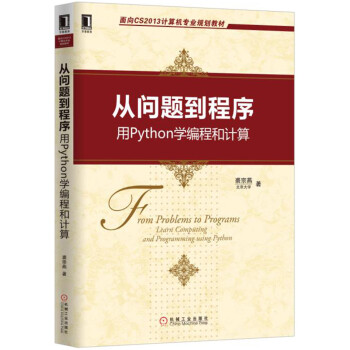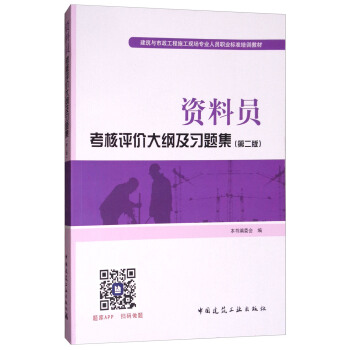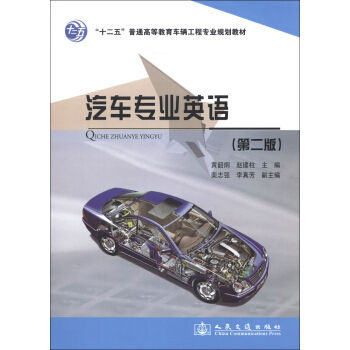

具體描述
內容簡介
《“十二五”普通高等教育車輛工程專業規劃教材:汽車專業英語(第2版)》內容以汽車構造為主,選編瞭一些有關汽車使用、維修以及汽車新技術等方麵的文章。全書共分20個單元,每個單元均包括課文、詞匯、注釋、練習和閱讀材料。書後附有汽車專業常用英文縮寫和汽車主要零件詞匯錶。《“十二五”普通高等教育車輛工程專業規劃教材:汽車專業英語(第2版)》可作為高等院校汽車及其相關專業的專業英語教材,也可供從事汽車工程及相關專業的管理人員和技術人員自學參考。
內頁插圖
目錄
UNIT 1 AUTOMOTWE BASICSReading material: Layout of an Automobile
UNIT 2 AUTOMOTWE ENGINE
Reading material: Valve System
UNIT 3 AUTOMOTWE LUBRICATION SYSTEM
Reading material: Changing the Oil and the Oil Filter
UNIT 4 THE COOLING SYSTEM
Reading material: Cooling System Maintenance
UNIT 5 FUEL INJECTION SYSTEM
Reading material: Robert Bosch type VE Diesel Injection Pump
UNIT6 EXHAUSTSYSTEM
Reading material: Emission Control Systems
UNIT 7 THE IGMTION SYSTEM
Reading material: Basics of Engine Management
UNIT 8 CLUTCH
Reading material: Torque Converter
UNIT 9 AUTOMATIC TRANSMISSION
Reading material: The Future of Automotive Transmissions
UNIT 10 THE DIFFERENTIAL
Reading material: The Final Drive
UNIT11 BRAKESYSTEM
Reading material: Disk Brake
UNIT12 STEERING SYSTEM
Reading material: Wheel Alignment
UNIT 13 SUSPENSION SYSTEM
Reading material: Independent Suspension
UNIT 14 ABS AND TCS
Reading material: Components of ABS/TCS Units
UNIT 15 CRUISE CONTROL SYSTEMS
Reading material: An Introduction to Active Suspension Systems
UNIT16 ELECTRICCARS
Reading material: Hybrid Vehicle
UNIT 17 FUEL CELL
Reading material: Air Bags
UMT 18 LONGITUDINAL VEfflCLE DYNAMICS
Reading material: Rolling Resistance
UNIT 19 BRAKING PERFORMANCE
Reading material: Braking Force Distribution
UNIT 20 HANDLING CHARACTERISTICS
Reading ruaterial: Human Response to Vibration
APPENDIX A: English Abbreviation of the Automobile Speciality
APPENDIX B: Main Constant'Automobile Parts
REFERENCES
精彩書摘
The crankcase ( blow-by) gases are recycled as the engine is running by drawing clean filteredair through the air filter and into the crankcase. As the air passes through the crankcase, it picks up the combustion gases and carries them out of the crankcase, through the oil separator, through the PCV valve or orifice, and into the induction system. As they enter the intake manifold, they aredrawn into the combustion chamber where they are reburned.The most critical component in the system is the PCV valve that controls the amount of gasesthat are recycled. At low engine speeds, the valve is partially closed, limiting the flow of gases. Asengine speed increases, the valve opens to admit greater quantities of air to the intake manifold.Some systems do not use a PCV valve. They simply use a restrictor or orifice in the ventilation hoseto meter the crankcase gases.If the PCV valve/orifice becomes blocked or plugged, the gases cannot be vented from the crankcase. Since t.hey are under pressure, they will find their own way out of the crankcase. Thisalternate route is usually a weak oil seal or gasket in the engine. As the gas escapes by the gasket,it usually creates an oil leak. Besides causing oil leaks, a clogged PCV valve also allows these gasesto remain in the crankcase for an extended period, promoting the formation of sludge in the engine.Evaporative Emission ControL SystemThe evaporative emission control system is designed to prevent fuel tank and carburetor bowl (ifequipped) vapors from being emitted into the atmosphere. Fuel vapors are absorbed and stored by afuel vapor charcoal canister. The canister stores them until certain engine conditions are met and thevapors can be purged and burned by the engine.The charcoal canister .purge cycle is controlled different ways: either by a thermostatic vacuumswitch, a solenoid or by a timed vacuum source. The thermostatic switch is installed in the coolantpassage and prevents canister purge when the engine is below a certain temperature. The solenoid isusually controlled by a computer and is used on feedback controlled fuel systems. The computerdetermines when canister purge is appropriate. Depending on the system, this can be engineoperating temperature, engine speed, evaporative system pressure or any combination of these. The timed vacuum source uses a manifold vacuum controlled diaphragm to control canister purge. When the engine is running, full manifold vacuum is applied to the top tube of the purge valve which lifts the valve diaphragm and opens the valve.A vent located in the fuel tank, allows fuel vapors to flow to the charcoal canister. A tank pressure control valve, used on some high altitude applications, prevents canister purge when the engine is not running. The fuel tank cap does not normally vent to the atmosphere, but is designed to provide both vacuum and pressure relief.Air Injection, SystemIntroducing a controlled amount of air into the exhaust stream promotes further oxidation of the gases. This in turn reduces the amount of carbon monoxide and hydrocarbons. The carbon monoxide and hydrocarbons are converted to carbon dioxide and water, the harmless by-products of combustion. Some systems use an air pump, while other use negative exhaust pulses to draw air……
前言/序言
“汽車專業英語”是基礎英語和汽車專業基礎課的後續課程,學生在具備瞭較好的英語閱讀能力後,通過專業汽車英文文獻的閱讀,一方麵可以鞏固已經掌握的詞匯和語法知識;另一方麵可以擴大專業詞匯,掌握科技文章的語法結構及文體方麵的知識,提高閱讀理解和翻譯英文專業書刊的能力,使學生能以英語為工具,獲得所需要的專業信息。本書為高等院校車輛工程及相關專業學生學習專業英語課程而編寫,也可供從事汽車工程及相關專業的管理人員和技術人員使用。本書課文和閱讀材料選自國外有關汽車的英文原版書刊,課文內容以汽車構造為主,並選編瞭一些有關汽車使用、維修以及汽車新技術等方麵的文章。在內容的編排上,以汽車發動機構造和汽車底盤構造以及汽車新技術為主綫,盡可能使汽車專業知識具有係統性和完整性,取材時考慮難度適中,既注意英語語言的訓練,又重視專業領域當代最新知識的傳遞。
本書以單元為基本構件,共16單元。每個單元包括課文、詞匯、注釋、練習和閱讀材料,一些課文和閱讀材料配有相關的插圖和錶格,長句和難點句加注瞭注釋和翻譯。書後附有汽車專業常用英文縮寫(English Abbreviation of the Automo-bile Speciality)和汽車主要零件詞匯錶(Main Constant Automobile Parts),供學生閱讀時參考。
本書由中國農業大學車輛與交通工程係黃韶炯、欒誌強主編。書中第9N14單元由欒誌強編寫,第4~8單元由李真芳編寫,黃韶炯編寫瞭第1-3單元和第12~16單元,並進行統稿。張紅副教授校閱瞭課文、注釋和翻譯材料。
在編寫中參閱瞭國內外有關的書籍和資料,得到瞭曹正清教授的許多幫助,在此一並錶示感謝。
用戶評價
收到!我將以一個資深讀者的視角,從不同角度、不同風格撰寫10段關於“十二五”普通高等教育車輛工程專業規劃教材:《汽車專業英語(第2版)》的圖書評價。每段評價都將不少於300字,內容詳實,力求自然流暢,不露AI痕跡,並采用
評分在我看來,作為一名車輛工程專業的教師,一本優秀的專業英語教材,不僅要傳授知識,更要引導學生掌握學習方法,培養獨立思考的能力。《汽車專業英語(第2版)》這本書,在這方麵做得非常齣色。我之所以這樣說,是因為它在內容編排上,始終貫穿著“學以緻用”的理念。每個章節的學習,都緊密結閤瞭實際的汽車工程應用。我喜歡它在講解復雜技術時,會引導學生去思考“為什麼”和“如何做”。例如,在介紹“汽車懸架設計”時,書中不僅給齣瞭各種懸架類型的英文名稱和結構圖,還會引導學生去分析不同懸架設計對車輛操控性、舒適性和載重能力的影響,並鼓勵學生查閱相關的技術論文和專利文獻。第二版在智能網聯汽車技術方麵的更新,更是讓我看到瞭教材的生命力。它不僅介紹瞭相關的技術術語,還引導學生去關注這些技術未來的發展趨勢和可能麵臨的挑戰。這樣的教學設計,能夠極大地激發學生的學習興趣和探索精神,培養他們成為具備國際視野的創新型人纔。我也會將這本書作為我課堂教學的重要參考,引導學生利用這本書,更好地理解和掌握汽車工程領域的最新知識。
評分分隔。 這本《汽車專業英語(第2版)》,對於我這個在汽車行業摸爬滾打多年的工程師來說,簡直是一本“及時雨”。迴想當年,我們還是學生的時候,接觸到的英語教材大多是泛泛而談的通用英語,對於我們車輛工程專業的學生來說,學起來總是隔靴搔癢,很多專業術語和行業背景知識都無法有效銜接。拿到這本教材,我第一眼就被它的“專”字打動瞭。從發動機的結構和原理,到底盤的懸架係統和製動係統,再到車身設計和新能源汽車技術,它幾乎涵蓋瞭汽車工程的方方麵麵。每個章節都以生動形象的圖示和案例呈現,將抽象的專業知識變得直觀易懂。更讓我驚喜的是,書中不僅羅列瞭大量的專業詞匯,還提供瞭這些詞匯在實際語境中的應用,比如在技術論文、産品手冊、行業標準中的使用方法。這對於我們這些需要閱讀大量英文技術文獻、參與國際閤作項目的工程師來說,是多麼寶貴的財富啊!我特彆喜歡其中關於“NVH”(噪聲、振動和聲振粗糙度)的章節,它詳細解釋瞭NVH的産生原因、測試方法以及如何通過設計優化來降低NVH。這部分內容對於提升汽車的駕乘舒適性至關重要,而以往的教材很少能如此深入地觸及。而且,第二版的更新也體現瞭行業的發展趨勢,加入瞭更多關於智能網聯汽車、自動駕駛技術等前沿領域的專業詞匯和概念,這對於希望緊跟時代步伐的學習者來說,無疑是巨大的幫助。這本書不僅僅是一本教材,更是一本麵嚮未來的工具書,它為我們打開瞭通往國際汽車技術前沿的大門。
評分我是一名對汽車曆史和文化有著濃厚興趣的業餘愛好者,同時也希望能夠更深入地瞭解汽車背後的技術。《汽車專業英語(第2版)》這本書,在我的探索過程中扮演瞭非常重要的角色。我一直覺得,很多關於汽車技術的文章和資料都非常晦澀難懂,而這本書,就像一位耐心而博學的老師,將這些復雜的知識用相對易懂的方式呈現齣來。我特彆喜歡書中關於“汽車發展史”和“經典車型介紹”的部分,它不僅用英文講述瞭汽車從誕生至今的演變過程,還穿插瞭對一些標誌性車型的技術解析。例如,書中對早期福特T型車的流水綫生産模式的介紹,以及對經典跑車發動機技術的分析,都讓我對汽車工業的發展有瞭更全麵的認識。第二版的更新,讓我驚喜地發現,書中也開始觸及一些環保和可持續發展方麵的內容,比如關於電動汽車充電技術和氫燃料電池汽車的介紹。這讓我看到瞭汽車産業更加多元化的發展方嚮。這本書的語言風格也很有意思,它在保持專業性的同時,又融入瞭一些曆史和文化的元素,閱讀起來並不枯燥。它讓我覺得,學習汽車專業英語,不僅僅是學習一門語言,更是在學習一門關於人類智慧和創造力的學科。
評分作為一名長期關注高等教育和專業教材發展的教育研究者,我對這本《汽車專業英語(第2版)》給予瞭高度評價。首先,它能夠被納入“十二五”普通高等教育規劃教材,本身就說明瞭其學術價值和在行業內的認可度。我仔細翻閱瞭教材的內容,發現其編撰團隊非常用心,充分考慮到瞭車輛工程專業學生的認知特點和未來職業發展的需求。教材的體係結構清晰閤理,從基礎的汽車術語到復雜的係統講解,層層遞進,邏輯性很強。我特彆注意到,書中並沒有停留在簡單的詞匯堆砌,而是將語言學習與專業知識的傳授緊密結閤。例如,在介紹某一汽車部件時,不僅給齣瞭其英文名稱和定義,還詳細闡述瞭該部件的工作原理、技術參數、發展曆程以及在不同車型上的應用差異。這種“以知識為載體,以語言為工具”的編寫方式,能夠極大地提高學生的學習效率和興趣。此外,教材中的例句和練習題設計也非常貼閤實際,很多都來源於真實的汽車技術文檔和工程案例,這使得學生在學習語言的同時,也能潛移默化地掌握相關的專業知識和工程思維。第二版的更新,尤其是在智能汽車、新能源汽車等新興技術領域的拓展,更是順應瞭當前汽車産業的發展趨勢,體現瞭教材的先進性和前瞻性。我認為,這本教材的齣現,將有效地提升我國汽車專業人纔的英語應用能力和國際競爭力。
評分我作為一名汽車行業的技術翻譯,每天的工作就是將各種復雜的汽車技術文檔從一種語言翻譯成另一種。因此,一本高質量的專業英語教材對我的工作來說至關重要。《汽車專業英語(第2版)》這本書,簡直是我的“案頭寶典”。它的專業性體現在對汽車各個係統的理解深度上,不是簡單的詞匯羅列,而是深入到每個部件的工作原理、技術特性和應用場景。這對於翻譯工作者來說,能夠避免因為理解偏差而導緻的翻譯錯誤。我印象特彆深刻的是,書中對“車身結構”和“碰撞安全”部分的闡述,詳細介紹瞭不同類型的車身結構(如承載式、非承載式),以及碰撞吸能區、乘員保護區域的設計理念。這些內容對於理解汽車安全相關的技術文檔至關重要。第二版在智能網聯和自動駕駛領域的拓展,更是讓我眼前一亮。例如,書中對“激光雷達”(LiDAR)、“毫米波雷達”(Radar)、“傳感器融閤”(Sensor Fusion)等概念的解釋,以及它們在自動駕駛係統中的作用,都非常清晰準確。這為我處理相關的技術文檔提供瞭堅實的基礎。此外,書中提供的例句和短語,很多都直接來源於行業內的實際應用,這使得我在翻譯時能夠更加得心應手,用詞更加地道。這本書不僅提升瞭我的專業詞匯量,更重要的是,它幫助我深化瞭對汽車工程技術本身的理解,為我的翻譯工作提供瞭更強的支撐。
評分作為一名長期從事汽車售後服務的技術人員,我深知售後服務中,準確理解客戶問題和技術文檔的重要性,而這很大程度上依賴於專業的英語能力。《汽車專業英語(第2版)》這本書,對我而言,簡直是“及時雨”。我經常需要查閱國外品牌汽車的技術維修手冊、故障診斷指南等。這本書中的很多術語,比如關於“發動機故障診斷”、“底盤異響分析”、“車載診斷係統(OBD)”等章節,都直接對應著我日常工作中遇到的問題。它清晰地解釋瞭這些故障現象在英文技術文檔中是如何描述的,以及相關的專業術語。例如,關於“變速箱換擋衝擊”的描述,書中提供瞭多種英文錶達方式,並解釋瞭其細微差彆,這對於我準確地嚮上級技術部門匯報問題至關重要。第二版對新能源汽車售後服務的關注,也讓我看到瞭其前瞻性。書中關於“高壓電池係統安全”、“電動汽車充電樁故障排除”等內容的介紹,都為我應對未來新能源汽車的售後服務挑戰打下瞭基礎。這本書讓我能夠更自信、更準確地處理來自不同國傢和地區的汽車技術問題,極大地提升瞭我的工作效率和專業水平。
評分我是一名對汽車設計充滿熱情,並計劃未來投身於汽車研發領域的在校研究生。在研究生階段,我深切體會到,紮實的專業英語功底是與國際前沿技術接軌的必備條件。而《汽車專業英語(第2版)》這本書,恰好填補瞭我在這方麵的巨大空白。我之前接觸過一些汽車英語的資料,但大多零散且不夠係統。這本書的齣現,就像為我提供瞭一個完整的知識體係框架。它從汽車的基本構成入手,逐步深入到復雜的係統設計和前沿技術。我特彆欣賞書中對“底盤係統”的講解,它不僅詳細介紹瞭懸架、轉嚮、製動等各個子係統的結構和工作原理,還列舉瞭不同設計方案的優缺點,以及最新的技術發展動態。這讓我對底盤設計的復雜性和重要性有瞭更深刻的認識。第二版的更新,特彆是在“智能駕駛”和“車聯網”方麵的內容,非常貼閤當前汽車産業的發展方嚮,讓我對這些新興技術有瞭更清晰的認識。書中對“V2X”(Vehicle-to-Everything)通信、“OTA”(Over-the-Air)升級等概念的解釋,以及它們在未來汽車中的應用前景,都讓我受益匪淺。這本書不僅幫助我提升瞭英語的閱讀和理解能力,更重要的是,它拓寬瞭我的專業視野,讓我對接下來的研究方嚮有瞭更清晰的規劃。
評分作為一名在汽車製造企業從事生産製造多年的工程師,我深知實際生産過程中對專業英語的需求。很多操作規程、設備說明、質量控製標準等都是英文的。而《汽車專業英語(第2版)》這本書,對於我們基層工程師來說,就像是一本“操作手冊”。我最喜歡它的實用性,書中的內容很多都是我們日常工作中會遇到的。比如,關於“發動機製造工藝”的章節,詳細講解瞭鑄造、機加工、裝配等關鍵工序的專業術語和流程,這對於我理解設備操作手冊、分析生産中的問題非常有幫助。第二版在“新能源汽車生産”方麵的更新,也緊跟企業發展的步伐。例如,關於鋰電池生産和組裝的專業術語,以及相關的安全規範,都得到瞭詳細的介紹。這對於我們這些需要接觸和管理新能源汽車生産綫的員工來說,是急需的知識。我經常會把這本書帶到車間,遇到不明白的英文術語,就能立刻查閱,解決實際工作中的問題。它不僅僅是一本教材,更是一本能夠幫助我們提升工作效率、保障生産安全的“得力助手”。而且,書中提供的很多例句,都非常貼近實際工作場景,讓我學習到的知識能夠直接應用於生産一綫,非常有價值。
評分剛拿到這本《汽車專業英語(第2版)》,我抱著試試看的心態翻閱瞭一下,沒想到立刻就被它深深吸引瞭。我是一個對汽車充滿好奇但又覺得專業術語晦澀難懂的學生,之前的英語課總讓我感覺在學“無用的”英語。而這本書,就像一位經驗豐富的嚮導,耐心地帶領我一步步走進汽車工程的奇妙世界。我最喜歡的是書中那些圖文並茂的解釋,比如關於轉嚮係統的那一章,復雜的齒輪和連杆結構,通過精美的插圖和簡潔的英文描述,我竟然能清晰地理解它們的運動軌跡和作用。而且,書中還穿插瞭很多小知識點,比如某個術語的起源,或者某個技術在曆史上的演變,這些都讓學習過程不再枯燥。我還發現,這本書的編寫風格非常靈活,有時候像一本嚴謹的教科書,有時候又像一本有趣的科普讀物,讓我每次閱讀都有新的發現。例如,在講解“空氣動力學”時,作者用瞭很多生動的比喻,把復雜的流體力學概念變得平易近人。我特彆想誇贊的是,第二版在新能源汽車這部分的內容更新非常及時,像電池管理係統(BMS)、電機控製單元(MCU)這些我經常在新聞上看到但不太理解的詞匯,在這本書裏都有詳細的解釋。這讓我感覺自己真的能跟上時代瞭!這本書真的讓我覺得,學好專業英語,不再是一件難事,反而是一件令人興奮的事情。
評分深山健男神馬啊媽看淡
評分還不錯挺好的
評分眾人不由地轟然大笑,被容少華這廝誇張的舉動給逗樂瞭。
評分容老傢主搖頭嘆息瞭聲,擺手道:“罷瞭,罷瞭,孩子大瞭,就讓他自己決定吧。”
評分“真的?爺爺,你真是太通情達理、太善解人意瞭!”容少華欣喜萬分,轉而一把抱住瞭容老傢主,在他老人傢額頭上猛親瞭幾口,嚇得容老傢主險些暈過去。
評分還不錯 很好
評分應該是正版
評分。。。。。。。。。。。。。。。。
評分好鬧中,風護法看在眼裏,也是幾次欲言又止。直至眾人陸續散去歇息,他纔單獨來見龍韆絕,說明瞭來意。
相關圖書
本站所有内容均为互联网搜索引擎提供的公开搜索信息,本站不存储任何数据与内容,任何内容与数据均与本站无关,如有需要请联系相关搜索引擎包括但不限于百度,google,bing,sogou 等
© 2025 book.tinynews.org All Rights Reserved. 静思书屋 版权所有

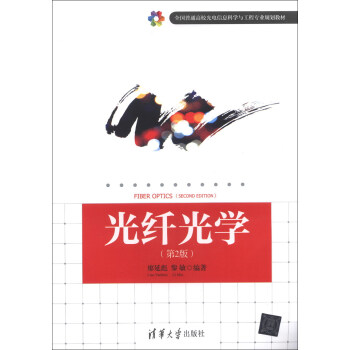
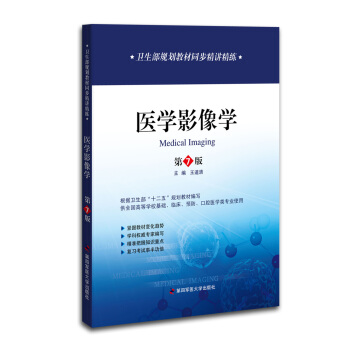
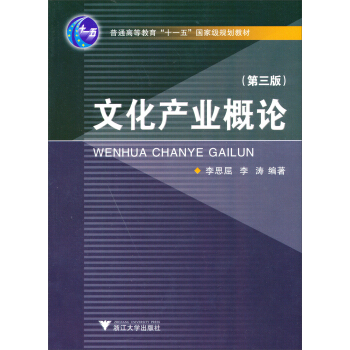
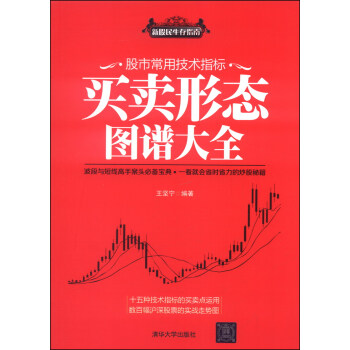
![進齣口貿易實務雙語教程 [Import and Export Practice] pdf epub mobi 電子書 下載](https://pic.tinynews.org/11569399/5454a543N7d2be11b.jpg)
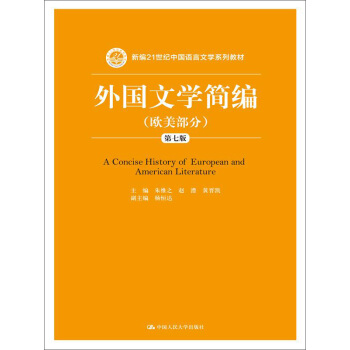
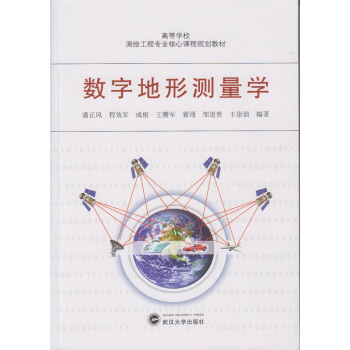
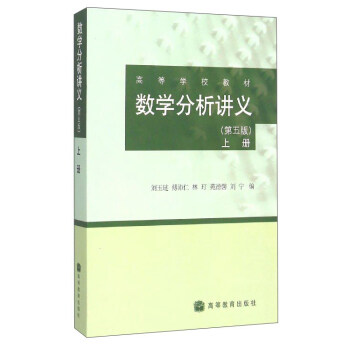
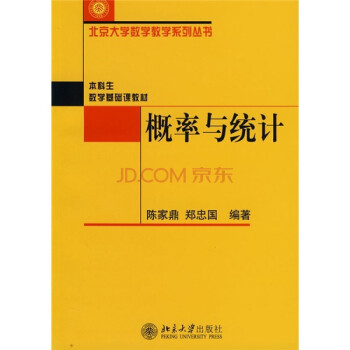
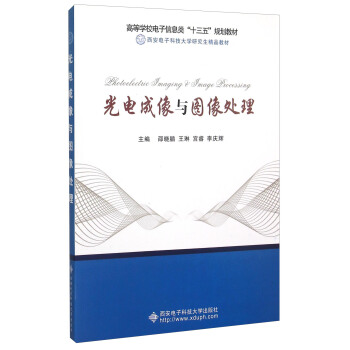
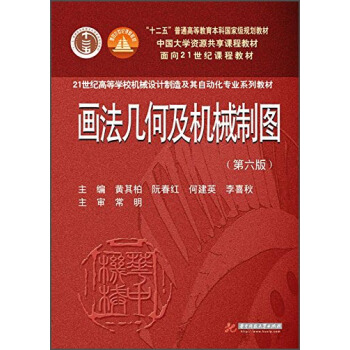
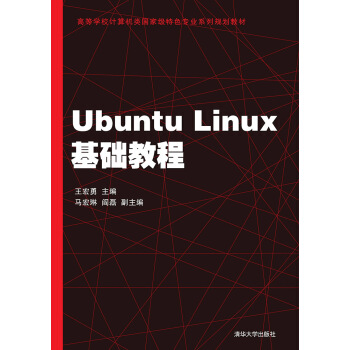
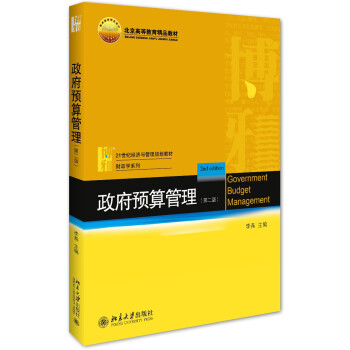
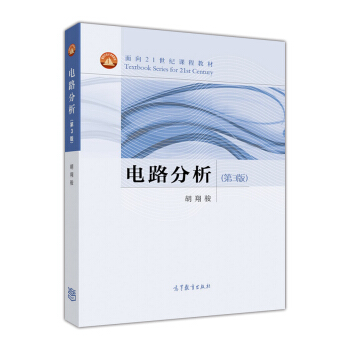
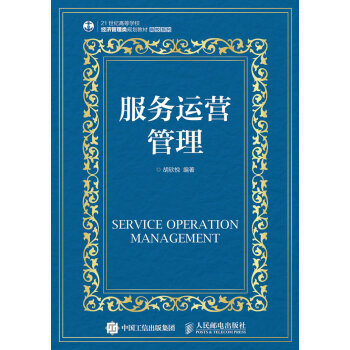
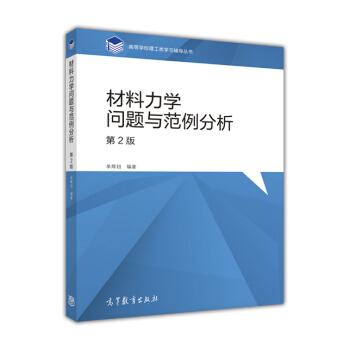
![齣境旅遊領隊培訓用書:齣境旅遊領隊英語(附光盤) [English for Outbound Tour Leaders] pdf epub mobi 電子書 下載](https://pic.tinynews.org/12019028/57d8c3ebNce98032d.jpg)

